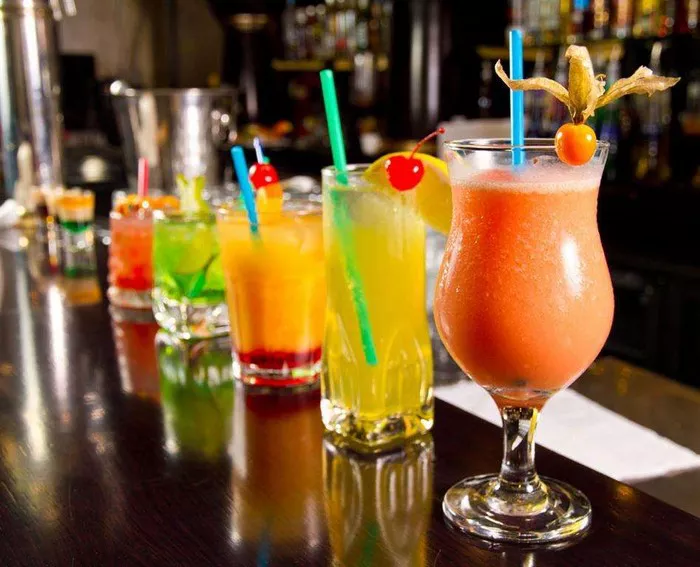The history of cocktails is a fascinating journey through time, culture, and innovation. From the classic Martini to the trendy Mojito, cocktails have become an integral part of social gatherings, celebrations, and even culinary experiences. But when exactly did cocktails become a thing? To answer this question, we must delve deep into the annals of history, exploring the evolution of mixology, societal shifts, and the rise of cocktail culture.
Origins in the Early 19th Century: The Birth of Mixology
The term “cocktail” first appeared in print in the early 19th century, but its exact origins remain shrouded in mystery. Some historians believe that the word “cocktail” emerged in the United States around the 1800s, derived from the French word “coquetier,” which refers to an eggcup used for serving spirits. Others attribute its origin to the practice of placing a rooster’s feather as a garnish on drinks, symbolizing potency. Regardless of its etymology, the emergence of the term marked the beginning of a new era in beverage culture.
When did cocktails become a thing? The early 19th century saw the rise of taverns, inns, and social clubs where patrons gathered to socialize and indulge in libations. Bartenders, often referred to as mixologists, experimented with various combinations of spirits, bitters, and other ingredients to create unique concoctions. These early cocktails were simple, often consisting of just two or three ingredients, but they laid the foundation for the elaborate and diverse cocktail culture we know today.
The Golden Age of Cocktails: Prohibition and Speakeasies
One of the most significant periods in the history of cocktails occurred during the Prohibition era in the United States. From 1920 to 1933, the production, sale, and consumption of alcoholic beverages were banned, driving the liquor industry underground. Speakeasies, clandestine bars that operated illicitly, flourished in cities across the country, becoming hotbeds of creativity and innovation in mixology.
When did cocktails become a thing? It was during Prohibition that cocktails truly came into their own, with bartenders concocting a myriad of inventive drinks to mask the harsh flavors of bootlegged spirits. Classic cocktails such as the Old Fashioned, the Sidecar, and the Gin Rickey gained popularity during this time, reflecting the resourcefulness and ingenuity of bartenders and patrons alike. Despite the challenges posed by Prohibition, the demand for cocktails continued to soar, solidifying their status as iconic beverages.
Post-War Prosperity: The Rise of Cocktail Culture
The end of World War II ushered in an era of prosperity and optimism in the United States, leading to a resurgence of cocktail culture. With the economy booming and consumer spending on the rise, Americans embraced cocktails as symbols of sophistication and glamour. The cocktail party became a ubiquitous social event, with hosts showcasing their mixology skills and guests enjoying an array of creative libations.
When did cocktails become a thing? The post-war period saw a proliferation of cocktail recipes, cocktail books, and cocktail bars, further fueling the popularity of mixed drinks. Bartenders experimented with exotic ingredients and innovative techniques, pushing the boundaries of traditional mixology. The Martini, the Manhattan, and the Daiquiri emerged as iconic symbols of the era, epitomizing the elegance and refinement of cocktail culture in the mid-20th century.
The Cocktail Renaissance: A Return to Craftsmanship
In recent decades, cocktails have experienced a renaissance, driven by a renewed interest in craftsmanship, quality ingredients, and artisanal techniques. Bartenders and mixologists have embraced the concept of “craft cocktails,” focusing on precision, creativity, and flavor balance. The cocktail renaissance has seen a revival of classic recipes, as well as the emergence of contemporary twists on old favorites.
When did cocktails become a thing? The cocktail renaissance can be traced back to the late 20th century, when pioneering bartenders began to challenge the status quo and elevate the art of mixology to new heights. Influential cocktail bars such as Milk & Honey in New York City and The Pegu Club in London paved the way for a new generation of cocktail enthusiasts, inspiring a global movement dedicated to the pursuit of cocktail excellence.
The Future of Cocktails: Innovation and Evolution
As we look to the future, one thing is certain: cocktails will continue to evolve, adapt, and innovate in response to changing tastes, trends, and technologies. From molecular mixology to sustainable sourcing, the possibilities are endless for the next chapter in the story of cocktails.
When did cocktails become a thing? The answer lies in the rich tapestry of history, culture, and creativity that has shaped the world of mixology. Whether sipping a classic Negroni or enjoying a cutting-edge craft cocktail, we can toast to the enduring legacy of cocktails and the timeless pleasure they bring to our lives. Cheers to the past, present, and future of cocktail culture!


